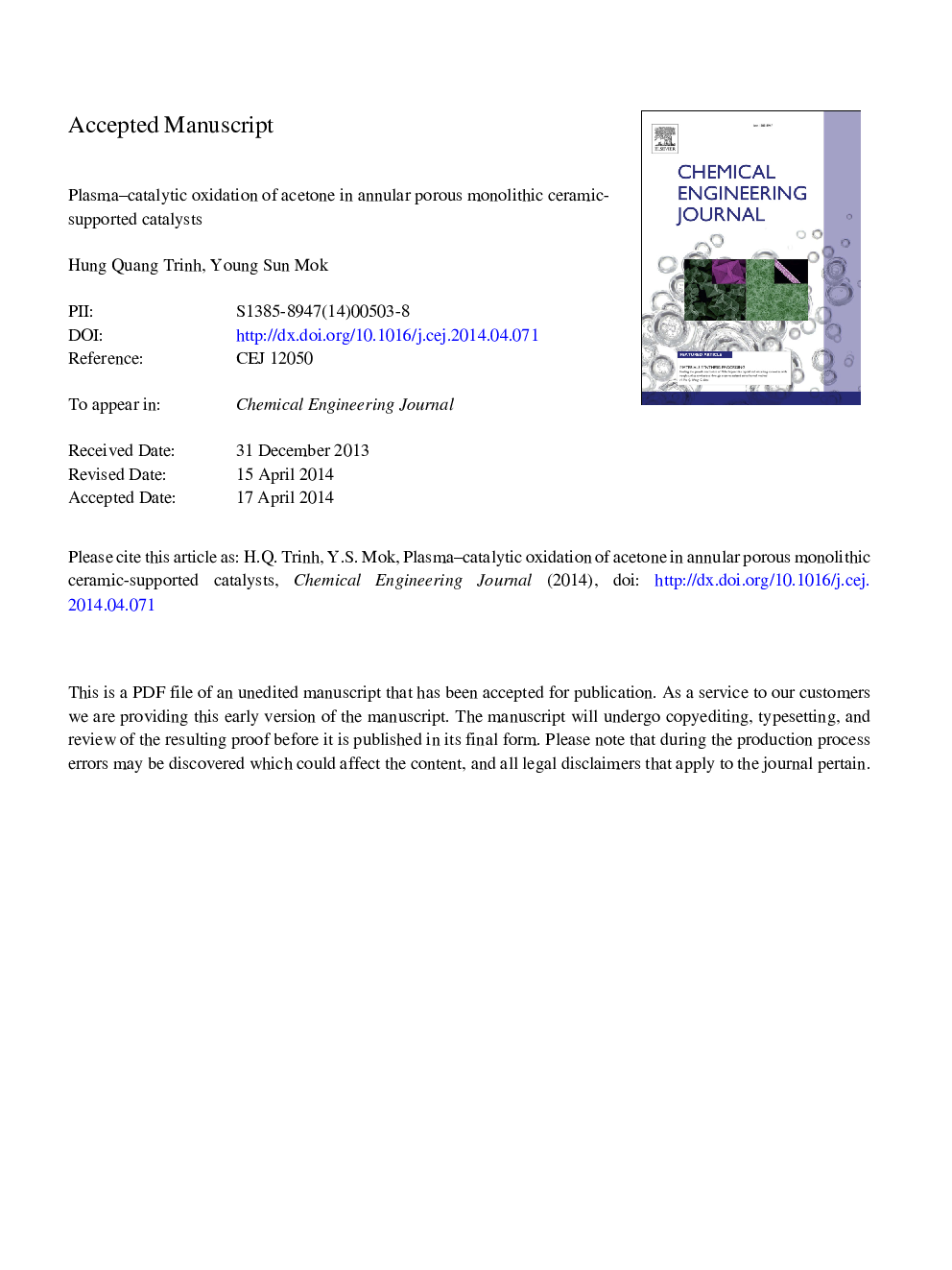| Article ID | Journal | Published Year | Pages | File Type |
|---|---|---|---|---|
| 6586419 | Chemical Engineering Journal | 2014 | 34 Pages |
Abstract
Oxidative decomposition of acetone over multichannel monolithic ceramic-supported catalysts combined with non-thermal plasma was investigated. Plasma was generated inside the porous ceramic by applying an alternating current (AC) voltage to the coaxial electrodes. The tandem plasma-catalytic reactor consisted of two ceramic-supported catalysts containing zinc oxide (ZnO) and/or manganese oxide (MnO2), in which the first supported catalyst was exposed to the plasma discharge and the second one was placed in the post-plasma region. Several sets of catalyst arrangements such as MnO2-loaded monolith followed by bare monolith, ZnO-loaded monolith followed by bare monolith, ZnO-loaded monolith followed by MnO2-loaded monolith and two consecutive MnO2-loaded monoliths with different Mn contents were examined in relation to the acetone decomposition and the byproducts formation. More than 90% of acetone was decomposed at a specific input energy (SIE) of about 1.0Â kJÂ Lâ1 with the catalyst arrangement of MnO2 (0.1% Mn) followed by MnO2 (5.0% Mn), while the decomposition efficiency obtained with two consecutive bare monoliths was about 66% at the same SIE. The use of ZnO in the plasma discharge region did not largely improve the acetone decomposition efficiency. Wherever it is placed either in the plasma discharge region or in the post-plasma region, MnO2 catalyst substantially promoted the acetone decomposition, obviously due to the dissociation of ozone into far more reactive oxygen atoms available for oxidizing acetone molecules.
Related Topics
Physical Sciences and Engineering
Chemical Engineering
Chemical Engineering (General)
Authors
Hung Quang Trinh, Young Sun Mok,
